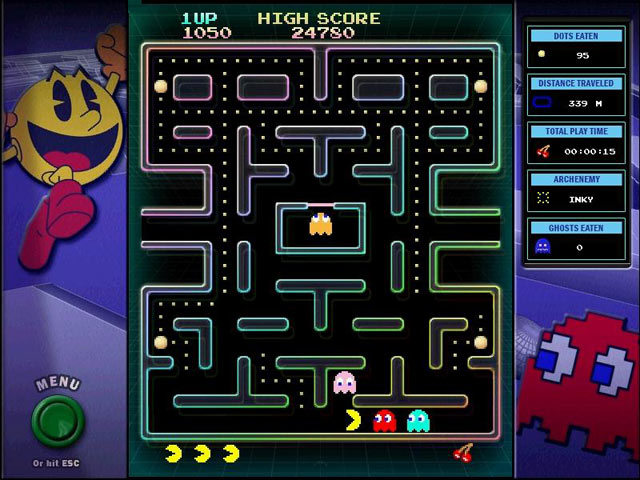

"There were no games that everyone could enjoy, and especially none for women. "All the computer games available at the time were of the violent type-war games and Space Invader types," Iwatani said in 1986. In response, Iwatani began thinking about a concept which ran counter to those games.
PAC MAN FULL
Japanese arcades of the late 1970s and early 1980s were dark, masculine places full of space shooting games inspired by the success of Space Invaders-including Namco's own enormously successful Galaxian.

PAC-MAN WAS DESIGNED AS A RESPONSE TO SHOOTING GAMES LIKE SPACE INVADERS. Two years after Pac-Man's release in 1980, he designed Pole Position. In fact, Iwatani initially expected that he'd work on pinball machines, but instead ended up designing the Breakout-inspired paddle games Gee Bee (1978), Bomb Bee and Cutie Q (1979). When then 22-year-old Toru Iwatani started work at Namco in 1977, he had no particular interest in designing video games. PAC-MAN DESIGNER TORU IWATANI HAD NO TRAINING AS A DESIGNER OR PROGRAMMER. Here's a brief look at some of the fascinating facts behind Pac-Man's making, its impact, and its legacy. But Pac-Man's success was far from certain its designer initially had no interest in games, and the public reaction to it was initially mixed. Whereas most arcade games of the era involved shooting marauding aliens, Pac-Man looked like a miniature, interactive cartoon: a comical tug-of-war between a round, yellow character with an addiction to munching tiny white dots and a quartet of roaming ghosts with big, anxious eyes.Īs we now know, Pac-Man was a massive hit, and its grip on pop culture is still strong today. When Pac-Man emerged in the early 1980s, nothing else looked or sounded quite like it.


 0 kommentar(er)
0 kommentar(er)
